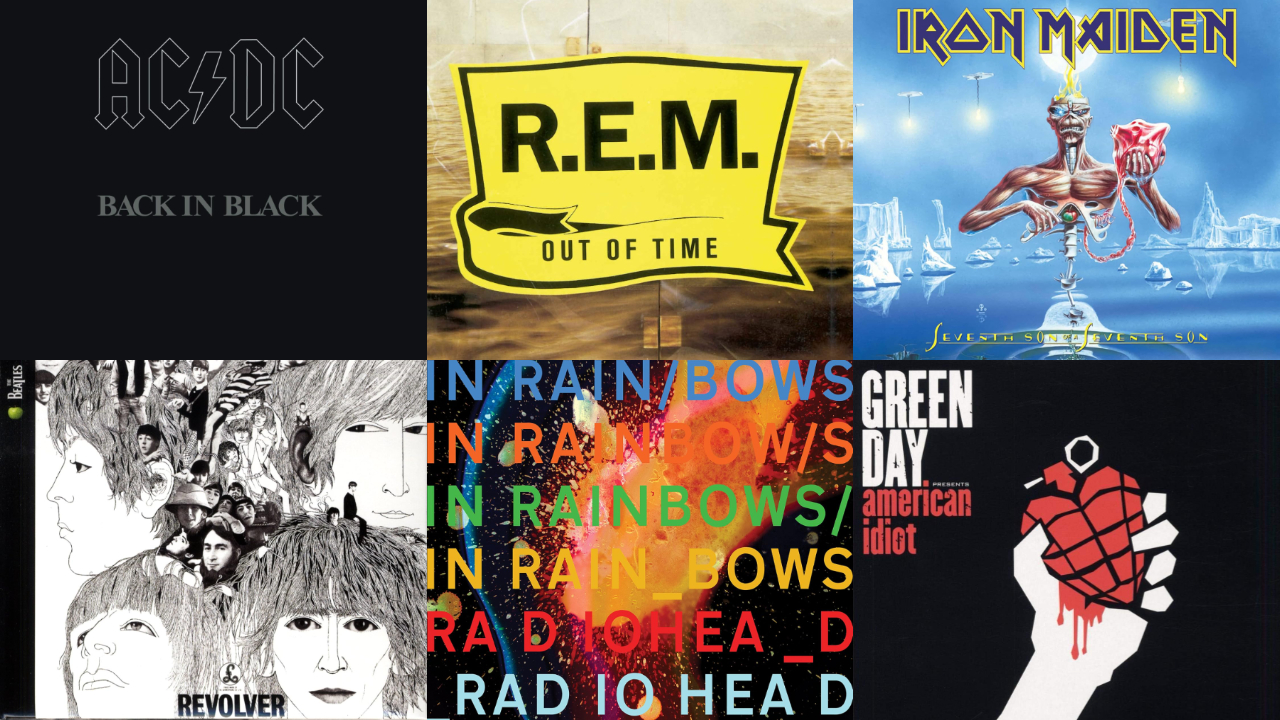Advance warning: this paragraph contains a clanging name-drop, apologies. A few years ago, I went on a walk across London with Coldplay frontman Chris Martin for a Q Magazine feature. Martin’s band were putting the finishing touches on their 2015 album A Head Full Of Dreams and he was explaining the importance of it being their seventh record.
First off, he said, the colour spectrum had seven colours in it and so with this being Coldplay’s seventh, he saw it as the end of their first spectrum. I nodded. And then he said that there were so many classic seventh records that he wanted this one to live up to it. I said, “Sorry, what?” “Classic seventh records”, he repeated, and then he reeled a few off. And he was right. I’ve become mildly obsessed with it in the years since, the sort of thing I bore friends in the pub about. This week, I decided I would properly investigate and discovered that there’s loads of them. It’s actually quite weird. I’m sure I’ve missed some so maybe you can get in touch and put me right. Unfortunately, Coldplay’s seventh isn’t in this list. It wasn’t their finest (their eighth was quite good though!) but here are a collection of the seven wonders, the magnificent seven, seventh heaven etc for you to inject into the conversation and bore your friends just like I do…

The Beatles – Revolver
The Fab Four had already established that they were quite good by the time they arrived at Revolver. But this is where things started to get really interesting, introducing psychedelia and studio experimentation into the mix, adding an otherworldly hue to its earthly brilliance.
Radiohead – In Rainbows
The Oxford five-piece had hit a bit of a sticky patch in the mid-00s, 2003’s Hail To The Thief decent but overlong and a subsequent tour leaving Radiohead exhausted. Sessions for In Rainbows were fraught but out of the turmoil they crafted a soulful, rich classic where their analogue art-rock and digital experimentation worked in perfect harmony.
Madonna – Ray Of Light
The queen of pop’s music career needed a boost at the point she approached her seventh album. Enter a collaboration with British electronic producer William Orbit that led to one of the best albums of Madonna‘s career, a swooping dance-pop record shimmying its way between ambient new-age ballads and out and out bangers.
Elton John – Goodbye Yellow Brick Road
Sir Elt’s seventh album contains so many classic singles (the title track, Bennie And The Jets, Candle In The Wind, Saturday Night’s Alright For Fighting) that it’s easy to forget what an ambitiously monumental undertaking it was, a conceptual, cinematic double exploring themes of fame, nostalgia and sex. Elton and Bernie Taupin weren’t in Kansas anymore.
Depeche Mode – Violator
Basildon’s synth-pop pioneers had spent the 80s becoming bigger and better with every album and things hit critical mass with their first record of the 90s. The masterful Violator laid down the template for where electro and rock could intertwine, a blueprint a generation of artists would return to repeatedly over the intervening years. It’s Depeche Mode‘s unbeatable peak.
The Rolling Stones – Beggars Banquet
The Stones were truly coming into their own when they made 1968’s Beggars Banquet, a lean and feisty rock’n’roll record that kicked off an imperial run of albums for Jagger & co.
U2 – Achtung Baby
The Dublin quartet were one of the world’s biggest bands as the 80s became the 90s but U2 required a bold reinvention after the stale, po-faced live album and film Rattle & Hum. Achtung Baby was a makeover alright, fun, playful and chocka with brilliant tunes. Inspired by rave culture, they crafted a moody rock record with dancing feet.
AC/DC – Back In Black
You could say Aussie rock legends AC/DC needed to make a statement on their seventh album and somewhat over-delivered. Their first record after the tragic death of Bon Scott introduced new singer Brian Johnson and, well, you know the rest. A hard-rock classic, its title and colourless cover were a tribute to their fallen comrade.
Sonic Youth – Dirty
With a pair of records at the start of the 90s, Sonic Youth had shown their peers that daring alt-rock could exist on major labels without compromising themselves. The second of those was the impeccably clattering and Butch Vig-produced Dirty, which the NYC noise specialists made a double just to hammer home the point.
R.E.M. – Out Of Time
Their 1988 album Green had made R.E.M. huge but on its follow-up, the Athens, Georgia quartet truly went supernova. Redressing their sound in an alt-country twang, acoustic guitars and a mandolin alongside their well-honed indie-pop jangle paid off big time.
Bruce Springsteen – Born In The U.S.A.
Here’s where The Boss truly showed he had no-one to answer to. Springsteen had already established himself as a supernaturally gifted songwriting talent but here he wrapped his tales of working-class struggle and patriotic unease in indelible, rock-pop anthems. It made him a global superstar.
Bob Dylan – Blonde On Blonde
The final instalment on a trilogy of “rock” records in the wake of his turning electric, Blonde On Blonde captures a generational talent in the purplest of patches. Bob Dylan recorded his definitive statement in just seven days, a double album featuring some of his all-time best songs.
Iron Maiden – Seventh Son Of A Seventh Son
Iron Maiden were the world’s biggest heavy metal band after 1986’s Somewhere In Time but this was not the moment for complacency. Instead they made this, a gloriously out-there concept album originally meant to be about clairvoyance but also featuring a song about Battersea Dogs Home. A crucial chapter in the Maiden story.
Red Hot Chili Peppers – Californication
Funny how many of these classic seventh records are preceded by troubled sixth efforts. The Chili Peppers looked like they’d run out of steam on 1995’s One Hot Minute but here, revitalised by the return of guitarist John Frusciante, they made their masterpiece, its meld of loose-limbed funk-rock, contemplative slow-tempo singalongs and hook upon hook selling by the bucketload.
The Cure – Kiss Me, Kiss Me, Kiss Me
But then you have some bands for whom their seventh wonder is merely the latest entry in a run of imperial brilliance. That’s where The Cure’s effort falls into. They’d released a Greatest Hits set, 1986’s Standing On A Beach, the year before and if that closed one chapter for Robert Smith’s goth-pop behemoths then this gloriously began another. Its beguiling mix of sprawling, atmospheric epics, wistful pop and anthemic alt-rock would put them on the path to the monster Disintegration, released two years later.

